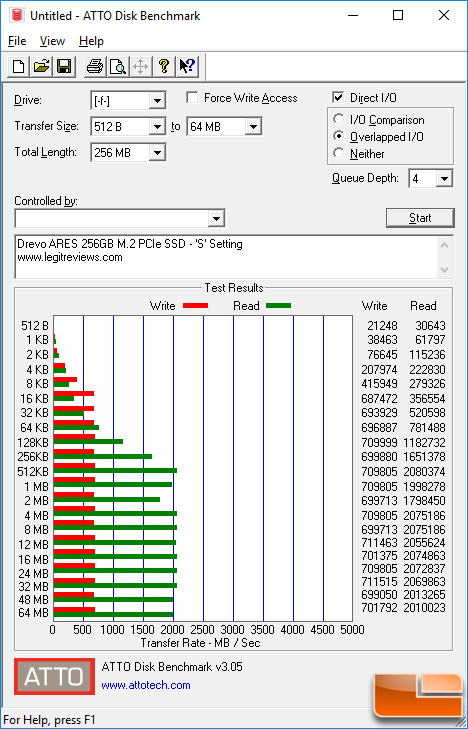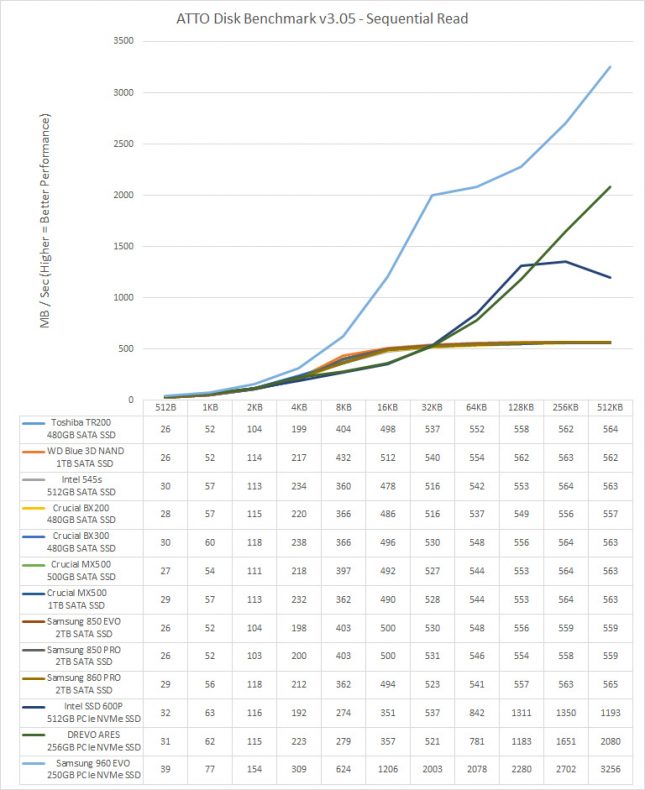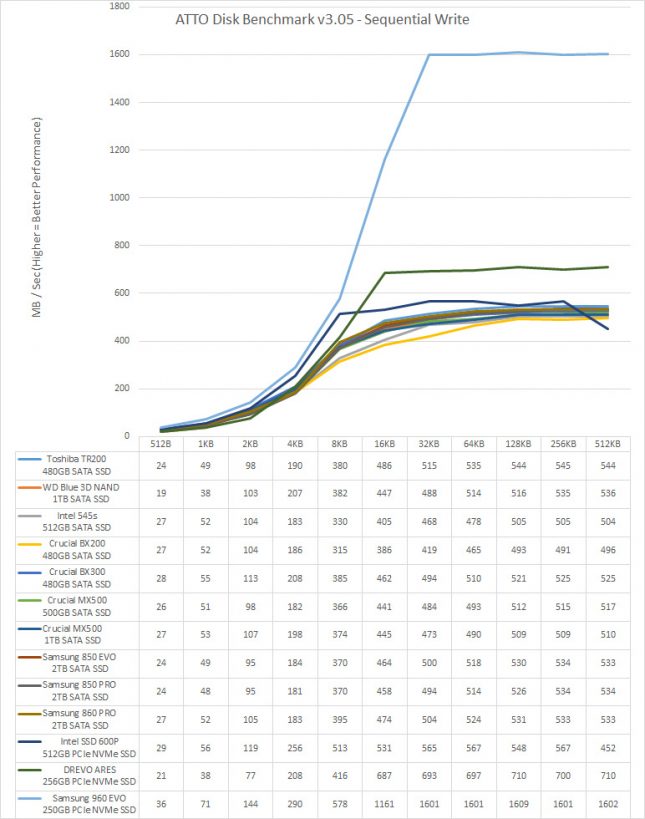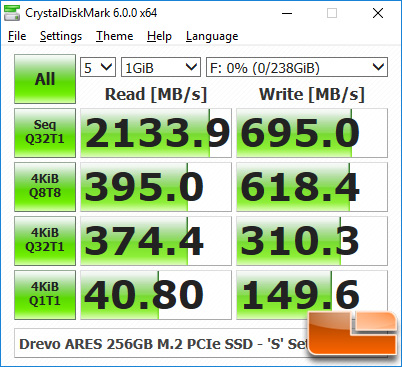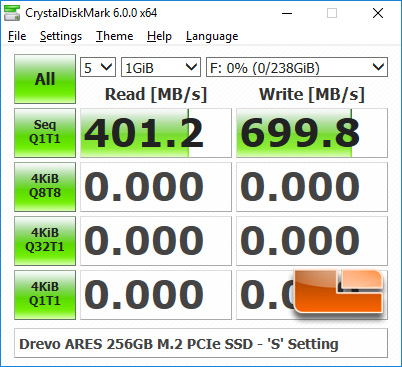DREVO ARES 256GB PCIe NVMe SSD Review
ATTO & CrystalDiskMark
ATTO v3.05
ATTO is one of the oldest drive benchmarks still being used today and is still very relevant in the SSD world. ATTO measures transfers across a specific volume length. It measures raw transfer rates for both reads and writes and places the data into graphs that can be very easily interpreted. The test was run with the default runs of 0.5KB through 64MB transfer sizes with the total length being 256MB.
ATTO – DREVO ARES 256GB:
Benchmark Results: ATTO showed the DREVO ARES 256GB PCIe NVMe drive reaching speeds of up to 2080MB/s read and 712 MB/s write in the standard overlapped I/O benchmark. This drive is rated at up to 1400 MB/s max sequential read and 600 MB/s max sequential write, so we exceeded both of those scores on our Intel Z370 based test platform.
Benchmark Results: Compared to some other SATA III and PCIe NVMe SSDs we can quickly see three PCIe NVMe drives that we tested offer higher performance levels than the SATA drives at most file sizes.
Benchmark Results: The DREVO ARES 256GB PCIe NVMe SSD has solid sequential write performance, but other drives like the Samsung 960 EVO are able to best it at the same capacity and price point.
CrystalDiskMark 6.0.0 x64
CrystalDiskMark is a small benchmark utility for drives and enables rapid measurement of sequential and random read/write speeds. Note that CDM only supports Native Command Queuing (NCQ) with a queue depth of 32 (as noted) and shows the highest score of five runs.
CystalDiskmark – DREVO ARES 256GB:
Benchmark Results: The DREVO ARES reached 2134 MB/s read and 695 MB/s write in the standard sequential write test. Random 4K QD1 performance was 41 MB/s read and 150 MB/s write. Those 4K random performance numbers improved up to 374 MB/s read and 310 MB/s write at a queue depth of 32.
Manually running the Sequential performance test at Q1T1 showed performance of 401 MB/s read and 700 MB/s write. The QD1 performance on this model is underwhelming for read speeds, but we were impressed that the sequential write speed improved at QD1!
Let’s look at some other benchmarks!

